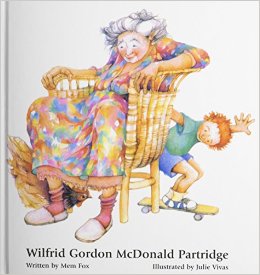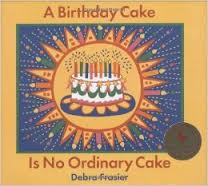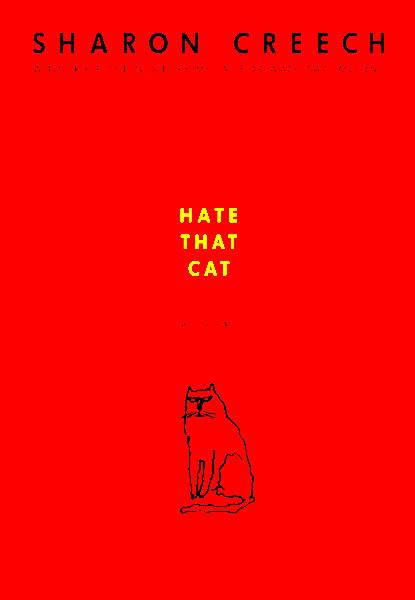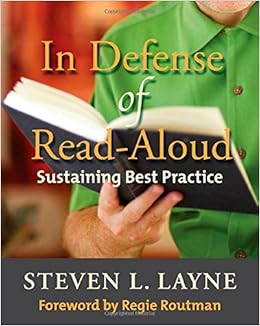The possibilities of picture books! As I began to think about what theme or category I would choose for this year's collection, my mind went to September. A new year brings so many hopes and dreams but also a feeling of "How am I ever going to teach them all I need to teach them???" Picture books can serve many purposes: sharing a beautiful story, putting forth a life lesson, fluency, finding wondrous words, comprehension strategies, reading like a writer, etc. For this year's list, I decided to select books that will really pull their weight! Each book has multiple purposes, making them text I can return to in order to teach different skills, saving time along the way! In no particular order...
1. In My Heart: A Book of Feelings by Jo Witek and illustrated by Christine Roussey.
This book explores how your heart feels when you feel happy, sad, angry, shy, confident, and more. There is a page that discusses how your feelings change and bad feelings won't last forever. There are examples of beautiful language throughout the book. An extension could be having students list feelings in their writer's notebook and pick one time they felt one way and tell that story. Another idea could be to create a class poem. Each student can think of a sentence, perhaps from their work in the writer's notebook, that describes when their heart felt a certain way. Like, "My happy heart is like hitting a home run and winning the game!" This work could be put together to create a collaborative poem about our feelings.
2. The Important Book by Margaret Wise Brown and illustrated by Leonard Weisgard
I love everything Margaret Wise Brown writes but The Important Book is one that transcends all grade levels and subject areas. Determining importance in reading is often challenging for my third graders, who will tell me every last thing that happened in a chapter but miss the larger issues at play. The Important Book has a lovely, predictable structure that makes your writing sound poetic. After reading this book, students can write the important thing about themselves. I am considering doing this as Padlet this year.
Once they are familiar with how to do this, this can be a way to explore content area issues (What's the important thing about weather? or What's the important thing about Mexico?- to take two third grade content topics as an example). It can also be a way to write about reading and explore a character or a book (The important thing about Fish in a Tree is..... or The important thing about Ally is...). An oldie but goodie that really pulls its weight!
3. Wilfrid Gordon McDonald Partridge by Mem Fox and illustrated by Julie Vivas
Mem Fox is another author I adore and her books often leave me with a lump in my throat or tears falling. Wilfrid Gordon McDonald Partridge is a book that touches my heard each time I read it. It's often a wonderful book to use to celebrate memories and writing and to introduce writer's notebooks. All of the items Wilfrid collects to help Miss Nancy remember can be related to the items students bring in to cover their writer's notebooks. This is also an excellent book to use for character education purposes as Wilfrid is a kind boy who wants to help Miss Nancy remember (connections to empathy).
4. I'm Trying to Love Spiders by Bethany Barton
Are there things you know you should love but just don't? For me, it is brussell sprouts and wearing high heels. Both would be good for me (I'm 5 feet 2 inches....on tip toes) but both make me miserable. I'm Trying to Love Spiders is a funny book with a lot of voice that will teach you facts about spiders. One thing students could do is create a double entry journal with facts they learned about spiders and what they think or wonder. Another way to use this book is to ask students about the things they wish they loved, but don't. This could be an entry in the writer's notebook. I can imagine at least one person would write, "I'm trying to love homework" or something like that! I think this book would be great to share when you want to convince students that books with facts don't have to be dry or boring. The author used a great structure to draw the reader in while still giving information about spiders.
5. My Pen by Christopher Myers
Last year, I read my class Love That Dog by Sharon Creech. There is quite the nod to Mr. Walter Dean Myers in that book, including his poem "Love That Boy." It would be fun to share the book, My Pen, written by the son of Walter Dean Myers, Christopher Myers. Beyond the connection to Walter Dean Myers, this is a brilliant, hopeful book for young writers. The opening words are, "There are rich people who own jewels and houses and pieces of the sky. There are famous people- musicians, athletes, politicians, whose words and actions spread across televisions and newspapers to every ear and eye across the world. Sometimes I feel small when I see those rich and famous people. But then I remember I have my pen." The book is dedicated "To the people who make things and to the people who share them" which reminds me of the generous, creative teachers here on Twitter. Students can compare this book to Harold's Purple Crayon and discuss the central message in both books. I think this would be a wonderful book to reread before a persuasive writing unit because it speaks to the power writing has and the voice it gives you in a world that can make your ideas feel small.

6. Hello Ocean by Pam Munoz Ryan and illustrated by Mark Astrella
This summer, as part of my work as co-facilitator of the Long Island Writing Project's Summer Institute, I was reminded of the beauty of this book. A skillful teacher, Regina Benzing, taught a demo lesson on using ocean sights, sounds, and textures to create a haiku. She read aloud this book to inspire more ideas for us as we thought about the words we could use in our own haiku. Here is the haiku I wrote during that lesson, inspired by a picture I took of my son last summer.

I was never a big fan of haiku until this lesson. In third grade, we use the word study program Fundations, which focuses greatly on syllables and the different syllable types. Haiku is based on syllables (5 in the first line, 7 in the second line, 5 in the last line is usually the formula). I think teaching students haiku and connecting it to the beach would be a great way to tap into their summer experiences while connecting to this new learning around syllables. This book has fantastic sensory images and the words are beautiful. One hope I have this year is to be more explicit about naming and posting words and phrases that we as a class love. Reading Hello Ocean would give us some words to start that collection!
7. Goin' Someplace Special by Patricia McKissack and illustrated by Jerry Pinkney
Early in the year, as we are getting to know each other and trying to create many entries in our writer's notebooks that will inspire ideas for drafts, this is a fantastic read for that purpose. Students can sketch their own "someplace special" in their notebooks and then write about why that place is special to them. This can connect to the setting in stories and why it is important that we pay attention to when and where the action is happening. Students can predict where the little girl is going and why. Goin' Someplace Special has connections to the civil rights movement. I read it last year to my class as I introduced a "library card challenge." Spoiler Alert- the "someplace special" in the book is the library, where everyone was welcome, no matter what. I want my students to have a deep and abiding appreciation for the library and all it can offer them in their lives. Goin' Someplace Special easily connects to many character education topics, such as courage, pride, and empathy.

8. The Giving Tree by Shel Silverstein
I know many people HATE this book, which is why I'm including it! There are a lot of fantastic craft moves in this book and the voice of the tree and the boy are so clear. Some of the important reading work I will do with my 3rd graders involves having them answer questions like, "What kind of person is ____?" and "What lesson can we learn from this story?" The Giving Tree would be a great text to use to explore characters and text based evidence to defend our answers. Years ago, at a Long Island Writing Project Summer Institute, I saw a teacher use this book along with the "I am" poem. She had participants take on the role of either the boy or the tree and write the "I am" poem from that perspective. Then, she paired up people who wrote as the boy and the tree and had them read their poem as a "poem for 2 voices." It was so powerful. I've done this lesson in workshops and teachers have spoken about extending that idea for works like "Romeo and Juliet." I think the "I am" poem can be a fun way to think deeply about characters and the poems for 2 voices can really show the difference between 2 characters. I plan on using The Giving Tree to try that activity this year. One other idea is to use this book in your persuasive writing unit. Ask students if the tree was right to be so giving and have them debate it, then write about it.

9. The Dot by Peter Reynolds
The Dot is about making your mark in the world, signing your name to what you create, and taking chances to create something that others might not like. International Dot Day takes place around September 15th and is a great chance to connect globally with other students around the idea that we can all make our mark in this world. Last year, my school celebrated Dot Day as part of our character education kick-off. This year, I want to connect Dot Day to the idea that we all can make contributions and we are all smart but in different ways. Paul Solarz is the author of Learn Like a Pirate. In this book, he describes teaching his students about Marble Theory, which says that people are all born with the same amount of "marbles" in our brain. Over time, we put those marbles into cups, which are our skills and abilities. You can have cups for all different things- being mechanically inclined, a great athlete, a talented artist, a strong writer, a good problem-solver, etc. Some children might have less marbles in one cup but more in another, and some "cups" don't get recognized in school. This was a powerful image to me and Paul actually uses marbles and cups to illustrate this point with his students. When students understand that we are all smart and have talents, it creates a better sense of community and helps build their sense of themselves as learners. I plan on discussing Marble Theory on Dot Day after reading this book aloud. This will connect well with our first chapter book read aloud, Fish in a Tree by Lynda Mullaly Hunt, for the Global Read Aloud Project.

10. Chrysanthemum by Kevin Henkes
When I taught kindergarten, this was one of my favorite books to read to the students in September. Your name is one of the first words you learn to read and write and it is a powerful way to introduce letters, sounds, words, etc. Now that I teach 3rd grade, I still read this book to my students in September. I plan on typing out all the students names and having them cut out the names and sort them in some way, which they can determine! They can sort by the number of letters in a word, the number of syllables, the first letter in each name, or some additional way. This will be a good way to introduce our word study program while connecting to the words that mean the most to them still- their names! Chrysanthemum has many interesting and new words for the students to learn and is a good book to start a discussion on kindness and respect for others. It's also an "old friend" for most students, as they've been read this book in their other classes. Since they are familiar with the story, they can listen in a new way for figurative language and the central message in the book (or the lesson we might learn after reading this book). I'd like to keep an ongoing list of books and their lessons for students to refer back to when they need to think about the lesson or theme in their own independent reading.
Whew! I'm exhausted thinking about how hard these books will work to accomplish many purposes. I can't wait to read the other #pb10for10 posts and get new ideas for books to read to my students this year!








































